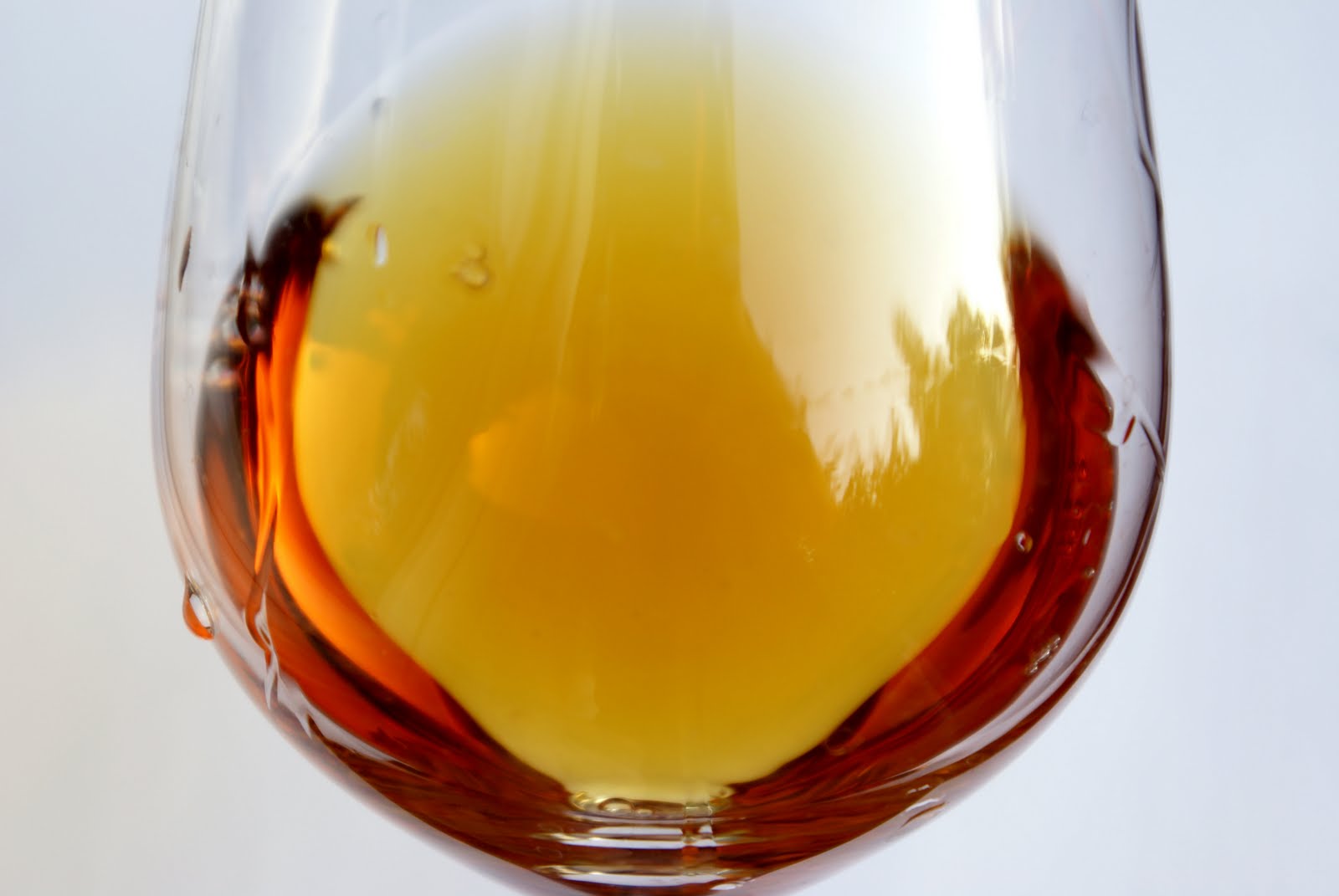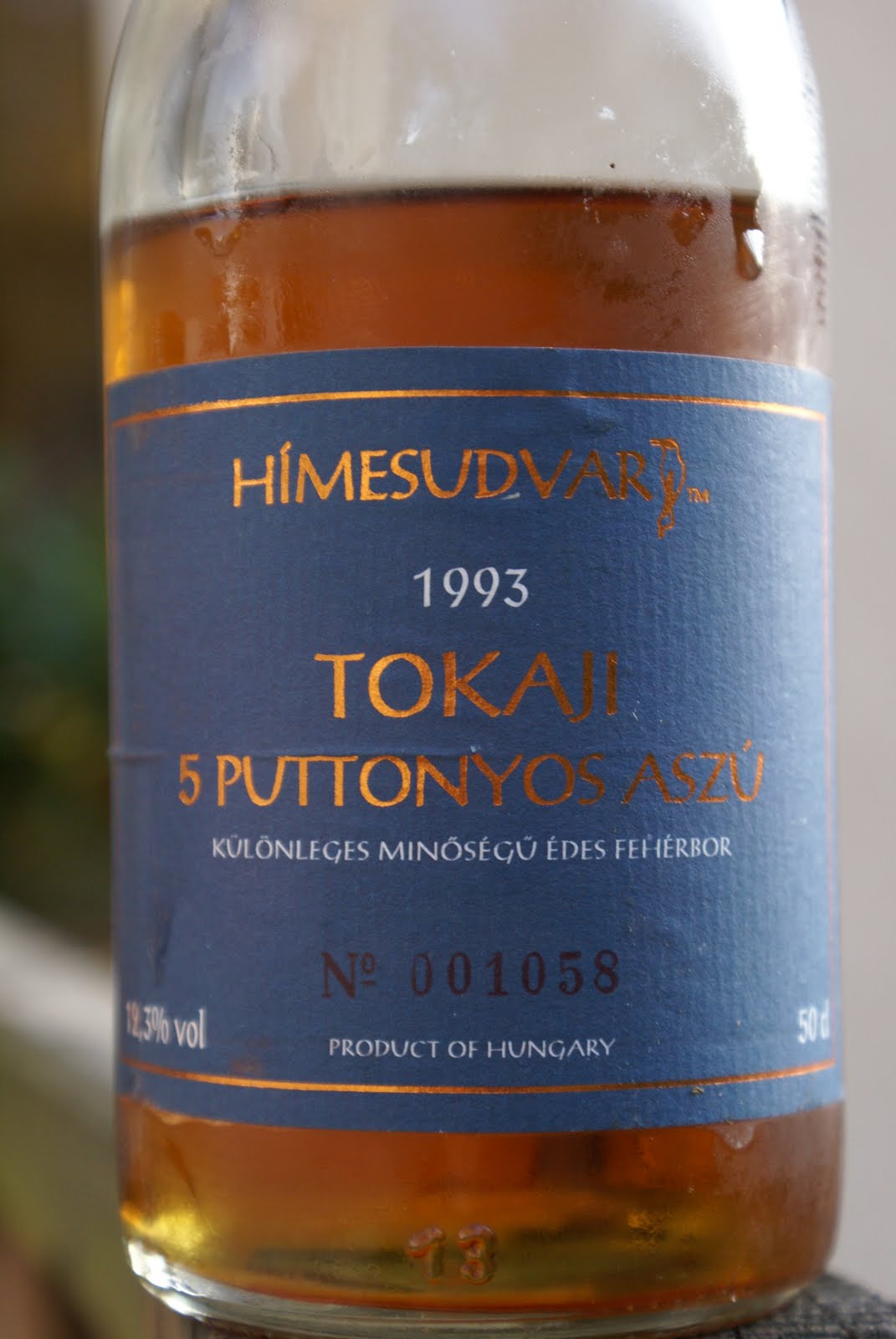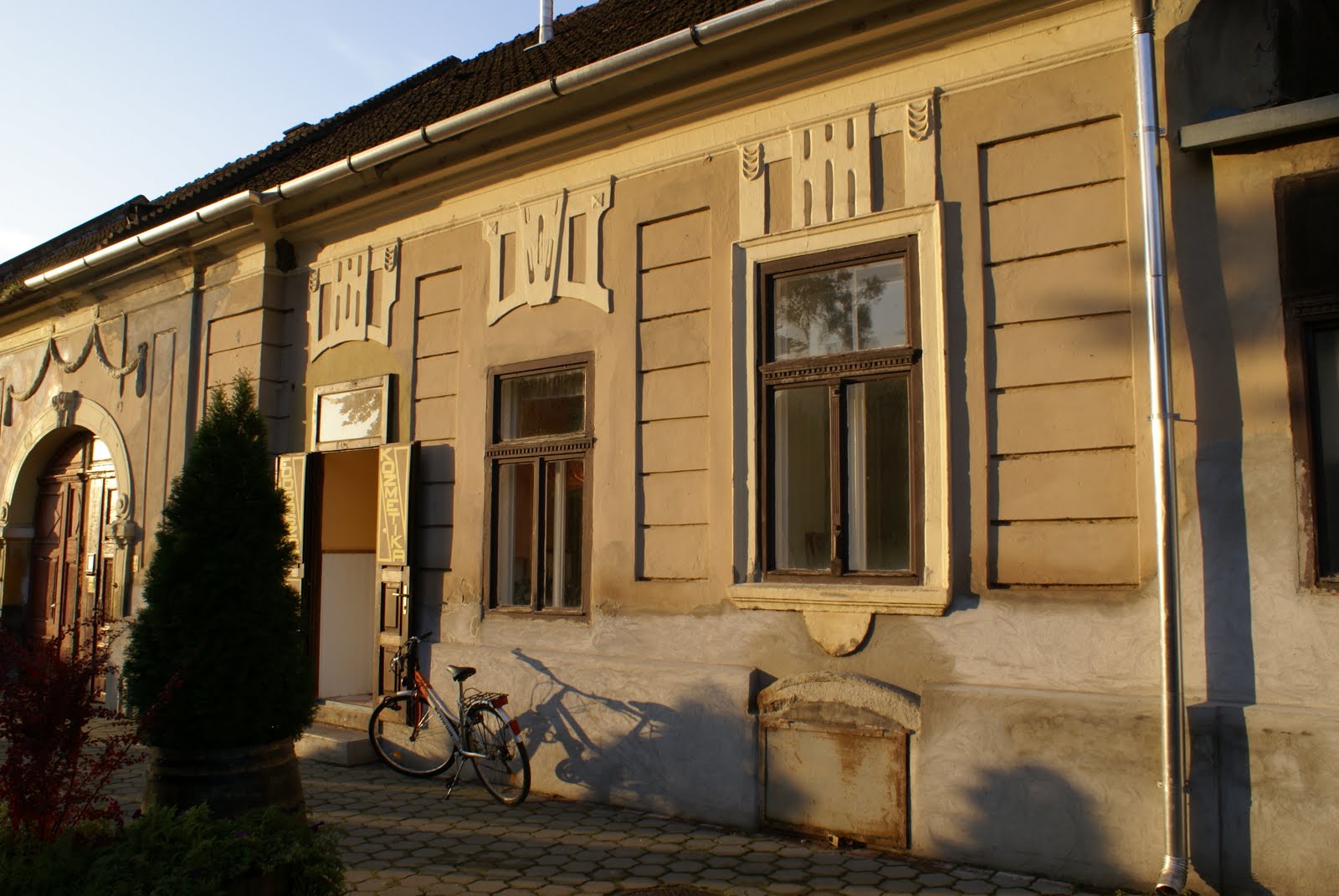Hímesudvar Tokaji Aszú 5 Puttonyos 1993
Posted on 5 October 2009
As I mentioned in my earlier post on puer tea, autumn is the time to pop the cork off some sweet botrytised wines. The chilly, misty mornings and low afternoon sun we’re currently experiencing in Central Europe are a clear reminder of the conditions in which the world’s greatest sweet wines are made. Morning humidity combined with sunny, warm daytime weather allow the development of so-called noble rot. Botrytis cinerea is a microscopic fungus that if proper conditions are maintained over several weeks, will gradually dry the grapes to raisins, concentrating sugar, acidity and flavour.
Botrytis wines are made throughout the world but three European regions are responsible for the best examples: Bordeaux’s Sauternes, Northern Germany (the Rhine and Moselle where wines are made from the Riesling grape) and the Hungarian region of Tokaj. (Some might want to add the Loire Valley, Alsace, and the Austrian Neusiedl Lake to this list).
I’ve already given an introduction to Tokaj here. For the first bottle of this new wine season, I was tempted to open some of the best stuff from my cellar such as István Szepsy or Királyudvar but went for this modest wine instead. The Hímesudvar Tokaji Aszú 5 Puttonyos 1993 comes from a small estate run by the Várhegyi family that is better known for its delightful wine shop and tavern located in the centre of Tokaj town. Over the last years their wines have been somewhat erratic with volatile acidity and unclean flavours especially in the dry and semi-dry Furmint, but this sweet Aszú comes from a legendary vintage that many still consider the best of the modern Tokaj era. (1999, 2000, 2002 and 2006 are serious challengers). It’s a bit like 1982 in Bordeaux, or 1990 in Tuscany – everybody made great wine and drinking these bottles today, provided the price is reasonable, is a consistent delight.
Purchased in 2001 for something like 20€, this wine is wonderfully preserved and showing the sheer class of that unrepeatable vintage. A slowly maturing amber colour with hints of red. Classic Tokaj nose, very mineral, not so sweet, though with a brown sugar edge of botrytis; also mixed spices, poppy seed (a common aroma with aged Tokaj) and quince. Lots of allure and depth here; a very good surprise. Medium sweet on palate with that wonderful balance of aged Tokaj (especially in the 5 puttonyos category), almost dry on the finish. Broad without really being very opulent, this is rather restrained and classic but with plenty of intensity, complexity and interest. Acidity is not so high perceptively (until recently, many 1993s were quite sharp); there’s minor bitterness on end but no VA. A brilliant wine and a fitting start to the autumn.
Tokaj town, not far from the Hímesudvar winery.
——————————————————————————————————————————————————————
Those who followed the blind tea tasting exercise in the previous post can now see the teas’ identity revealed at the bottom of post here.




